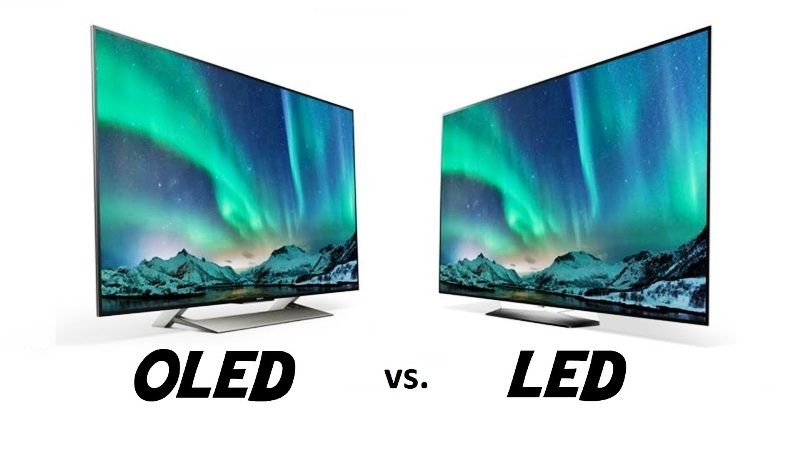
Are you looking to buy a new TV but you don’t know how to go about choosing the one that best suits your needs? When it comes to choosing a new TV, there are different models available in the range between LED and OLED and each technology has its own advantages and disadvantages. In this guide, you will learn about the differences and understand which one to choose from OLED vs. LED TV.
LED vs. OLED TV

If you want to buy a new TV, you may have come across a question about what is the difference between LED TV and an OLED TV? There is no better technology than the other, the only sure thing is that OLED TVs generally cost more. So you might be thinking that is it worth spending more on an OLED TV or is it worth saving up and getting a traditional LED TV? Let’s try to understand the differences between OLED TVs and LED TVs in terms of performance, comparing them in every technical aspect below.
LED vs. OLED TV Differences
If the acronyms can suggest two similar products, while in reality, the operating principle of OLED and LED technologies is completely different.
An LED display is basically a liquid crystal screen that will generate images thanks to a backlight produced by a series of light-emitting diodes. Where else, in an OLED TV, you will not find any rear light beam, as it is the display itself that emits light. Additionally, there are also differences in terms of significantly lower energy consumption in an OLED display, capable of offering even very thing screens.
As far as the image quality is concerned, we cannot judge with absolute certainty that one technology is better than the other.
How an LED TV Works
LED TVs are nothing more than an evolution of LCD panels. To generate an image, you need a light source external to the liquid crystal panel, that is the backlight.
In practice, a rear light beam hits the panel through it before being seen by the observer. Each pixel is generated by a single liquid crystal that works as a kind of switch by letting or not the light pass and thus giving life to the image.
While in LCD TV, it is a lamp that creates the light beam, in an LED screen it is a series of strips or grids of light-emitting diodes.
How an OLED TV Works
As was already mentioned above, an OLED panel does not use a backlight system but rather emits its own light. The acronym means Organic Light Emitting Diode or organic light-emitting diode.
A display of this type consists of a thin film or organic material laid on a glass or plastic substrate, in turn, inserted between two other defined transport layers. The latter constitute the cathode and anode to which a voltage is applied.
The electric charge will excite the organic matter which will begin to emit light. In addition, in this case, each pixel is generated by a single unit that will light up or remain off depending on whether it is electrically turned on or off.
Color quality
Both OLED and LED TVs usually have near-perfect color accuracy. Most of the new models of 8K TVs are equipped with Wide Color Gamut (WCG) technology which allows them to reproduce a wider range of colors that are closer to that used in cinema.
LED-LCD TVs and OLED models that use color enhancement technologies such as nanocrystals or “quantum dots” can reproduce this new, wider color gamut. The only sources that take advantage of this extended color gamut are 4K Ultra HD Blu-Ray and some streaming 4K content from providers such as Amazon Video and Netflix.
Price
A few years ago the choice was often conditioned by the price which, for OLED TVs, was very high. Today, the costs have come down and become much more affordable. In any case, LED panels remain the cheapest solution. Added to this is also a larger number of models available with the possibility of always finding some interesting promotions.
Which one to choose between LED vs. OLED TVs?
If you are looking for better picture quality, OLED technology will still bear backlit LED panels, even though the latter technology has seen many improvements in recent times. Additionally, OLED is lighter, thinner, offers a higher viewing angle, consumes less power, but is still expensive. While LED TVs currently represent the purchase with the best value for money always.
That is everything you need to know about which is the best TV between LED vs. OLED. In the meantime, do not forget to check out our other guides on Octa-Core vs Snapdragon Processor: Which is the Best CPU, and Apple M1 vs M2: Which Chipset is Better.
